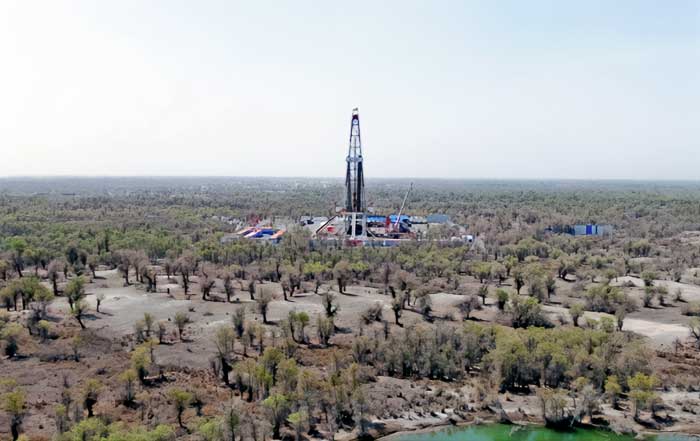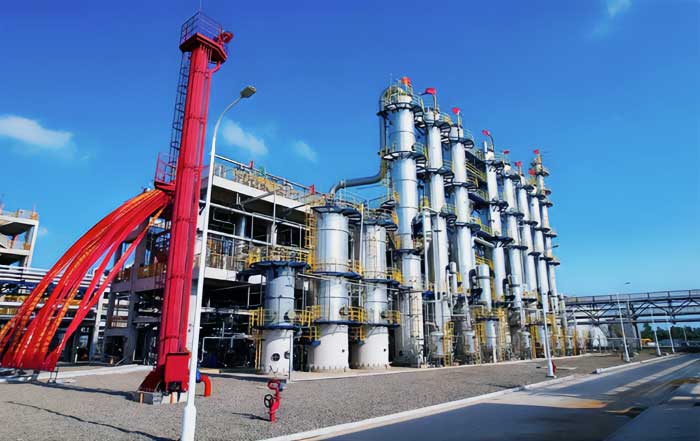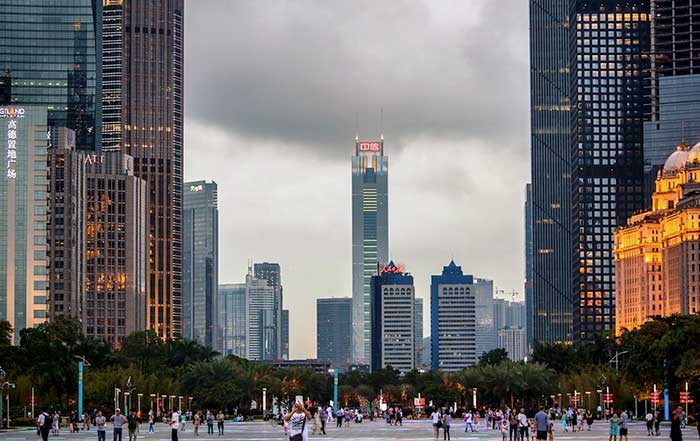China Petroleum & Chemical Corporation (HKG: 0386, "Sinopec") has initiated the drilling of Project Deep Earth 1-Yuejin 3-3XC Well ("the Well") on May 1 in the Tarim Basin, Xinjiang Uyghur Autonomous Region. With a design depth of 9,472 meters, it will be the deepest oil and gas well in Asia and a breakthrough of milestone significance in China's ultra-deep oil and gas exploration, which now has world-leading technological and equipment capabilities.
Located in the Shaya County of Aksu Prefecture by the edge of the Taklamakan Desert, the Well has completed stratigraphic sealing of the upper 1,500 meters in only four to five days. The drilling operation, carried out by Sinopec Oilfield Service Corporation, is estimated to reach the carboniferous strata in 21 days, which will set a new record in the region.
The extensively difficult and challenging drilling operation is also setting a new Asian record for horizontal displacement in ultra-deep drilling. Wells with a depth of over 9,000 meters are defined as ultra-deep wells, which is the most challenging field of oil and gas engineering technology development. The depth of the Well is 624 meters higher than Everest. In addition to the common bottlenecks of complex geological structure and high temperature, pressure, and hydrogen sulfide content, the well has also been designed for a 3,400-meter horizontal drilling distance, which brings up new issues such as difficult casing and the formation of cuttings bed in horizontal depth.
Sinopec Northwest China Petroleum Bureau has innovatively adopted ultra-deep and large displacement technology that accesses the rich oil and gas resources without damaging the wetland natural reserve. Equipped with "a pair of eyes", the high-temperature and high-efficiency directional technique transmits signals from the vertical depth of 7,200 meters enabled by the high-precision drilling measurement and control system.
Sinopec aims to launch pilot ultra-deep exploration projects and push the limits of depth through innovation-driven development of deep marine facies geological theory and exploration technologies. Through its self-developed rotary geo-steerable drilling system and the high-temperature and high-pressure logging equipment, Sinopec has achieved leapfrog development of fast drilling in high precision. As of now, the Shunbei oil and gas field of the Shendi-1 Project has 49 oil and gas wells that are deeper than 8,000 meters, and multiple wells have set new Asian records.




